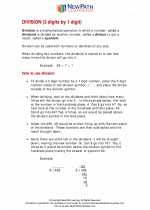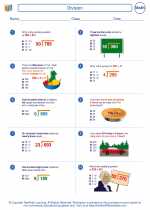Transversal Lines
Definition
A transversal line is a line that intersects two or more other lines at distinct points.
Key Concepts
- When a transversal line intersects two parallel lines, several pairs of angles are formed.
- Corresponding angles, alternate interior angles, and alternate exterior angles are important angle pairs formed by a transversal and two parallel lines.
- Understanding the properties and relationships of these angles is crucial in solving problems involving transversal lines.
Angle Pairs Formed by a Transversal and Two Parallel Lines
When a transversal intersects two parallel lines, the following angle pairs are formed:
- Corresponding Angles: Angles that are in the same position at each intersection. They are located on the same side of the transversal and in corresponding positions relative to the parallel lines.
- Alternate Interior Angles: Angles that are on opposite sides of the transversal and inside the parallel lines. They are non-adjacent and congruent.
- Alternate Exterior Angles: Angles that are on opposite sides of the transversal and outside the parallel lines. They are non-adjacent and congruent.
Guided Practice
Let's practice identifying and solving problems related to transversal lines and angle pairs.
- Identify the pairs of corresponding angles, alternate interior angles, and alternate exterior angles given a transversal and two parallel lines.
- Determine the measures of unknown angles using the properties of angle pairs formed by a transversal and two parallel lines.
- Apply the concept of transversal lines and angle pairs to solve real-world problems and geometric puzzles.
Summary
Transversal lines play a crucial role in understanding the properties of angles formed by intersecting lines. By mastering the relationships between corresponding angles, alternate interior angles, and alternate exterior angles, you can enhance your problem-solving skills in geometry and real-life scenarios.
.◂Math Worksheets and Study Guides Sixth Grade. Division
Study Guide Division
Division  Worksheet/Answer key
Worksheet/Answer key Division
Division  Worksheet/Answer key
Worksheet/Answer key Division
Division  Worksheet/Answer key
Worksheet/Answer key Division
Division 

 Worksheet/Answer key
Worksheet/Answer key
 Worksheet/Answer key
Worksheet/Answer key
 Worksheet/Answer key
Worksheet/Answer key

The resources above cover the following skills:
Connections to the Grade 6 Focal Points (NCTM)
Number and Operations: Students' work in dividing fractions shows them that they can express the result of dividing two whole numbers as a fraction (viewed as parts of a whole). Students then extend their work in grade 5 with division of whole numbers to give mixed number and decimal solutions to division problems with whole numbers. They recognize that ratio tables not only derive from rows in the multiplication table but also connect with equivalent fractions. Students distinguish multiplicative comparisons from additive comparisons.